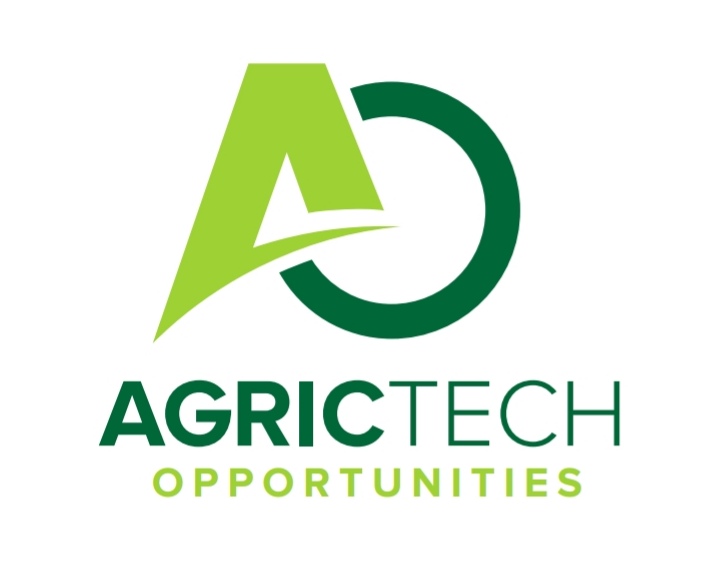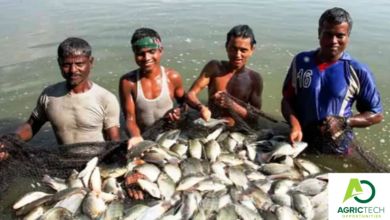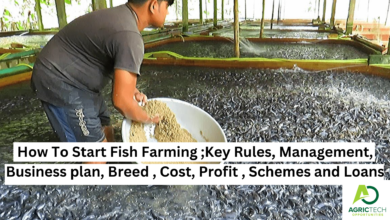Understanding Fish Reproduction And Spawing Process 2023

Host
Global Fish Farmers
Target Audience
Fish Farmers
Introduction
Fish reproduction refers to the process by which fish produce offspring. Most fish reproduce sexually, with males and females releasing eggs and sperm into the water. Fish are seasonal breeders. Reproductive cycles are controlled by endocrine hormones.
The fertilized eggs develop externally or internally, depending on the species. External fertilization occurs when eggs and sperm are released into the water simultaneously, allowing fertilization to occur outside the fish’s body. Stimuli of the hormones include. External – rainfall, food, photoperiod. Internal – light, salinity, temperature. Also control secondary sexual characteristics such as colouration and reproductive behaviourInternal fertilization occurs when the male deposits sperm directly into the female’s body, and the eggs are fertilized internally.
ALSO READ: Profitable Fish production In Zimbabwe 2023
Spawning-act of obtaining eggs from the female and sperm or milt from the male. Reproductive cycles and spawning are often artificially controlled to ensure continuous seed production. Controlled through genetic, environmental and hormonal strategies.
Fish vs. Livestock:
Fish and livestock are both sources of food, but there are some key differences between them. Feeding fish in aqueous environments takes on dimensions beyond those in feeding land animals: Fish are aquatic animals, while livestock refers to terrestrial animals raised for agricultural purposes. Loss of nutrients if feed is not consumed immediately.
Nutrient contribution of aquatic organisms in pond culture Fish farming, also known as aquaculture, involves raising fish in controlled environments such as ponds or tanks. Livestock farming, on the other hand, involves raising animals like cattle, pigs, or poultry on land.
ALSO READ: How To Start Fish Farming ;Key Rules, Management, Business plan, Breed , Cost, Profit , Schemes and Loans
Induced spawning
1.Genetic – selection for early or late maturity in order to stretch breeding season. More difficult and takes time
2.Hormonal – intra-peritoneal injections to induce spawning e.g., pituitary extracts, HCG
3.Environmental – Brood stock kept under artificial light; reduced light periods and temperature induce early spawning in catfish, salmon and trout
Fish ecology
Phytoplankton
•Phyto – animal; plankton – wanderers, drifters
•Are autotrophic
•Most are buoyant and float in water
•e.g., green algae, dino-flagellates and diatoms
Pond ecology
Functions of phytoplankton
•Primary producers, form first link in the aquatic food chain
•Account for approximately 50% of the photosynthesis on this planet
•Contribute oxygen to the water
•Produces a bloom that helps shade out unwanted rooted aquatic plants
•Pond fertilisation encourages proliferation of phytoplankton
ALSO READ: The Profitability Of Broilers Versus Layers -Overview 2023 Guide
Feeding and Nutrition of Fish:
Fish have specific dietary requirements to support their growth and overall health. Their nutritional needs vary depending on the species, size, and life stage. Fish are classified into different feeding groups, including herbivores, carnivores, and omnivores. Herbivorous fish primarily consume plant matter, while carnivorous fish feed on other animals. Omnivorous fish have a diet that includes both plant and animal matter.
Zooplankton
•Heterotrophic and feed on the phytoplankton
•Constitute the primary consumers in the chain
•vital food source for all fish fry
•e.g., copepod, jellyfish, krill, rotifers, tiny shrimp, and juvenile fish
To meet their nutritional needs, fish require a balanced diet that provides essential nutrients such as proteins, carbohydrates, fats, vitamins, and minerals. Commercial fish feeds are formulated to meet these requirements and are available in various forms, including pellets and flakes. Additionally, some fish may also consume live or frozen foods like insects, worms, or small crustaceans.
Water quantity
•There must enough water to last the production cycle
•Water quality
•Characteristics of the water in a culture system that affect the growth, welfare and health of the fish
•Temperature, pH, dissolved oxygen (DO), dissolved CO2, CH4, salts,
•Colour and turbidity
•Organic particulate matter
ALSO READ: 4 Ways To Increase Live Weight In broilers And Egg Size In layers
Water pH
•Desirable pH 6.5-8.5
•When CO2 is used up by plants in PS during the day, pH may rise for short periods
•Water which is constantly acidic (low pH) can be corrected through liming (Ca(OH)2)
•Disc lime into the bottom of the dry pond, or
•Broadcast lime onto the surface of the water if the pond is full
Zooplankton:
Zooplankton refers to a diverse group of small organisms that drift in water bodies, including oceans, lakes, and rivers. They are an essential part of the aquatic food chain, serving as a primary food source for many fish species. Zooplankton includes various organisms such as tiny crustaceans, rotifers, and larval stages of larger animals.
Water temperature
•Determine species choice, feeding, spawning, reproduction, immunity, metabolism, growth, etc.
•Drastic temperature changes can be fatal
•Influence solubility of oxygen and % un-ionized NH3 in the water
•Heating water is possible, but costly; cooling is impractical
Dissolved oxygen (DO)
•Aquatic life requires DO >4-5ppm
•For surface water DO is affected by temperature and usually exceed 7-8 mg/L
•DO fluctuates due to PS O2 production by algae and consumption by respiration (fish)
•DO reaches a maximum during the late afternoon and minimum during sunrise
•Cloudy weather, rain, plankton die-offs, heavy stocking and high feeding rates result in low DO
Feeding and nutrition
Fish are fed in water. This means feed not consumed within a reasonable time represents not only an economic loss but can also reduce water quality in the culture system. Implication – Feeding allowance, feeding method, and water stability of the feed are factors that must be considered in fish feeding.
ALSO READ: Approved Principles Of Poultry Production For 2023/24
Fish, especially in their early life stages, often rely on zooplankton as a crucial part of their diet. They feed on these small organisms to obtain the necessary nutrients for growth and development. Zooplankton populations can fluctuate depending on environmental factors such as temperature, nutrient availability, and predation pressure
For more updates On Agric Tech Opportunities kindly join the social groups below: | Join Our Whatsapp Group| Follow us on Linkedin | Also, Follow us on Twitter. |
God bless





